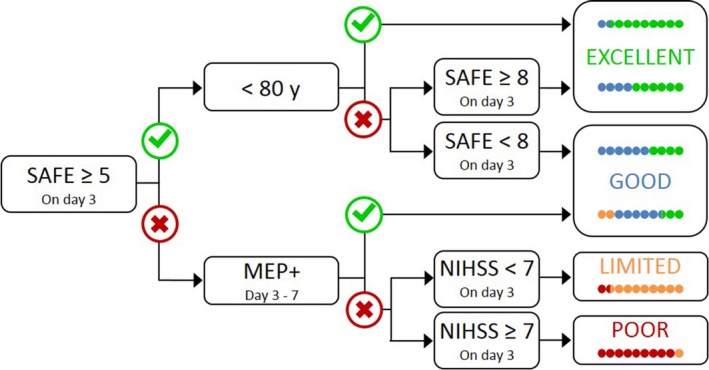Figure 3.

The PREP2 algorithm predicts upper limb functional outcome at 3 months poststroke. The four possible upper limb outcomes are color‐coded. The colored dots depict the proportion of patients expected to achieve each color‐coded outcome, depending on their pathway through the algorithm, based on the results of the CART analysis. Patients who achieve a SAFE score of five or more within 72 h of stroke symptom onset, and are less than 80 years old, are most likely to have an Excellent upper limb outcome. Patients who achieve a SAFE score of five or more within 72 h of stroke symptom onset and are 80 years old or more, are most likely to have an Excellent upper limb outcome provided their SAFE score is at least 8; otherwise they are likely to have a Good upper limb outcome. Patients whose SAFE score is less than 5 at 72 h after stroke symptom onset need TMS to determine MEP status in the paretic upper limb, a key biomarker of corticospinal tract integrity. If a MEP can be elicited (MEP+) approximately 5 days poststroke then the patient is likely to have at least a Good upper limb outcome. If a MEP cannot be elicited, the NIHSS score obtained 3 days poststroke can be used to predict either a Limited outcome if the score is less than 7, or a Poor outcome if the score is 7 or more.
